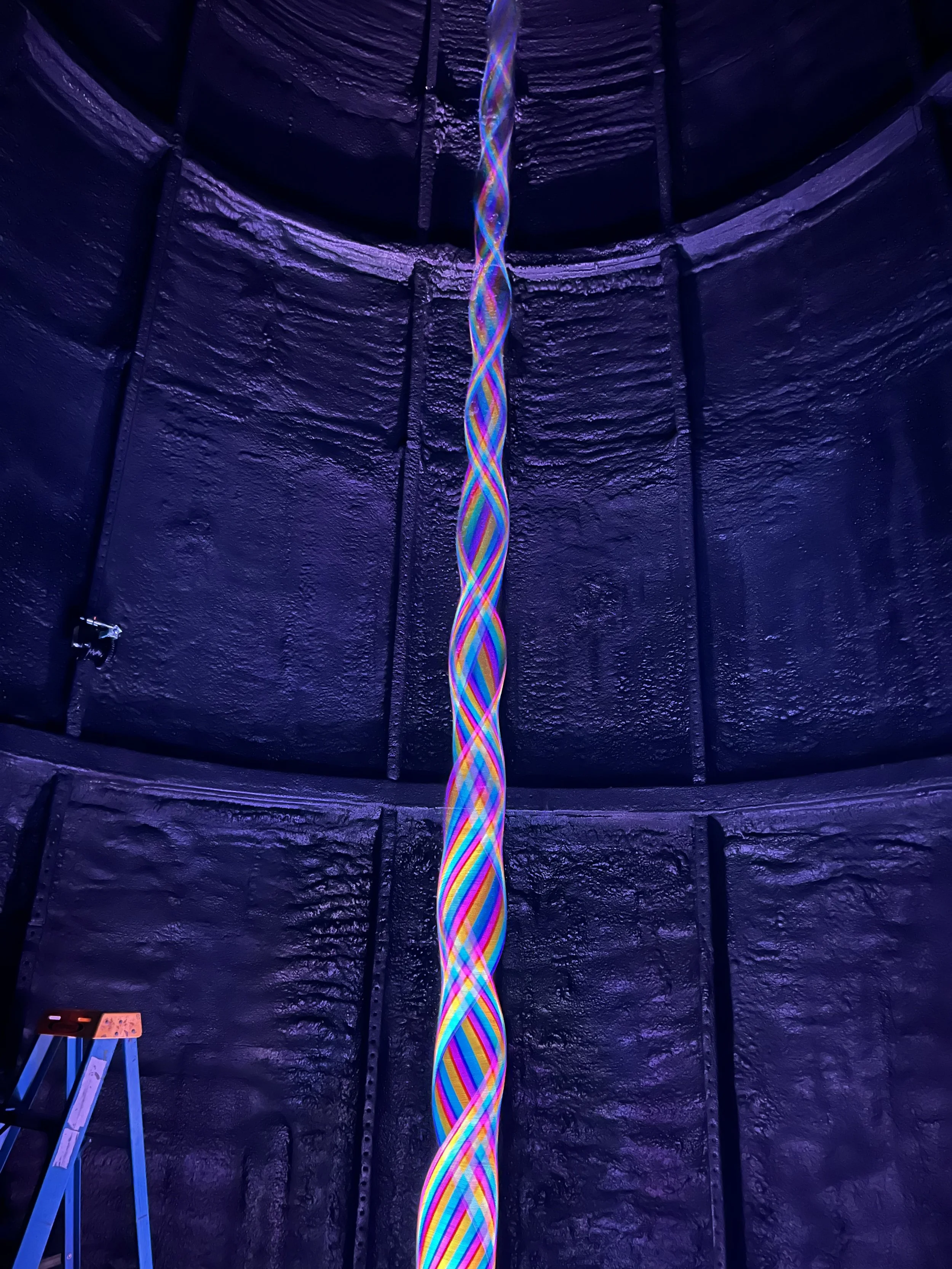Manipulate the touch-free optical sensors to control the beam of white light running through the cord, as it is suspended from a mounting point at the top of the Science Mill Silo to a motor mounted to the floor of the Silo. The motor churns the rope, sending waves of motion up and down its length. The undulating rope is illuminated by LED light, which looked at directly, appears white. However, the motion of the rope reveals that this white light is created by mixing various different colors of light together. As the cord moves back and forth, the white light is unraveled into the various colors of light that were previously combined. Each of the touch-free sensors represents a different wavelength of visible light and control the LED color input being shone through the sculpture, resulting in different Additive Color combinations. A display near the control interface reveals the numerical values of the color wavelength being displayed.
Subtractive color occurs when we combine different colorants, such as green and yellow paint being mixed to create blue paint. Our eyes receive mixed wavelengths of light being reflected off of the surface of objects. Light Loom shows us the science behind additive color, which is observed in white light which is actually a mixture of all the other wavelengths of color being mixed together.

